Notes
Racism, Symbolism, Story: More Notable Images from the Campus “Free Palestine” Movement
In our second post on the “free Palestine” campus protests, we focus on the institutional divide, portraits and emotions, police actions, and more scenes that challenge the media narrative.
Complementing my post last week about the values and intentions of the campus protests, I want to share more images carefully selected for powerful angles and storylines.
The Horrible Schism
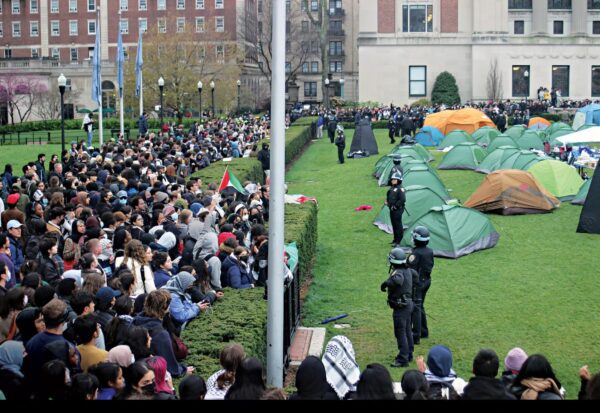
April 18 “Right after the first arrests, the police began guarding the lawn while hundreds of protesters and onlookers stood in shock.” —photographer Asha Ahn/Columbia Spectator
It would have been a powerful picture otherwise. Still, the pole dividing the image in half is profound in amplifying the separation of stunned Columbia students from their protest encampment. But the image cuts deeper than that. Symbolically, it captures the damage done between the institution and so many of its students and faculty. In driving this wedge, the university has seriously damaged its bond to the community and its higher ideals, likely for years to come.
Movements Are Made Up of Individuals
The following two pictures and the image above are part of an issue of New York Magazine co-produced with the Columbia Spectator. The collection of portraits came about from an offer to any student or faculty member to speak out “on tape.” The images are essential for personalizing the movement and their diversity of personalities, opinions, and tone.
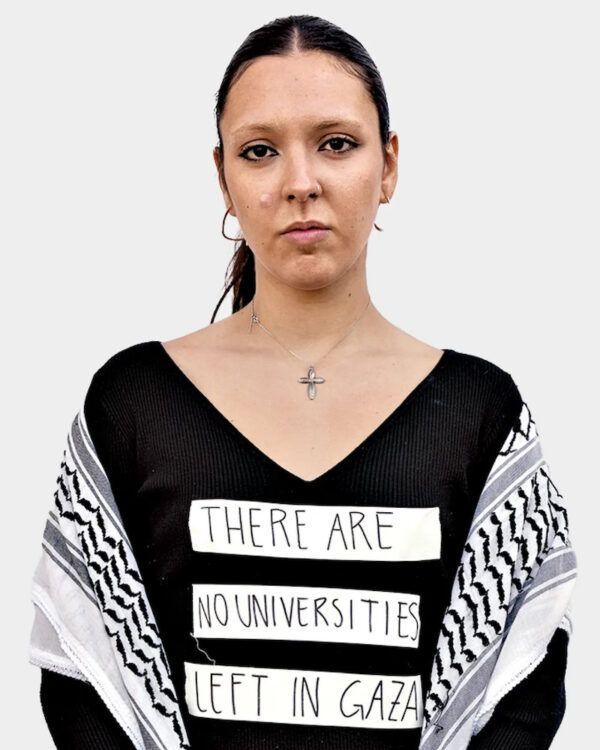
Photographs by Gabriella Gregor Splaver, University News Deputy Photo Editor for Columbia Spectator, in a collaboration between the Spectator and New York Magazine
This is not just a protest against physical destruction but an outcry against the shattering of dreams and disrupting a generation’s future. The slogan carries an implicit irony—that the universities, the symbols of enlightenment and progress, now have more status in their absence. It underscores a profound expectation: that higher education in Palestine should be an unquestionable standard and a right.
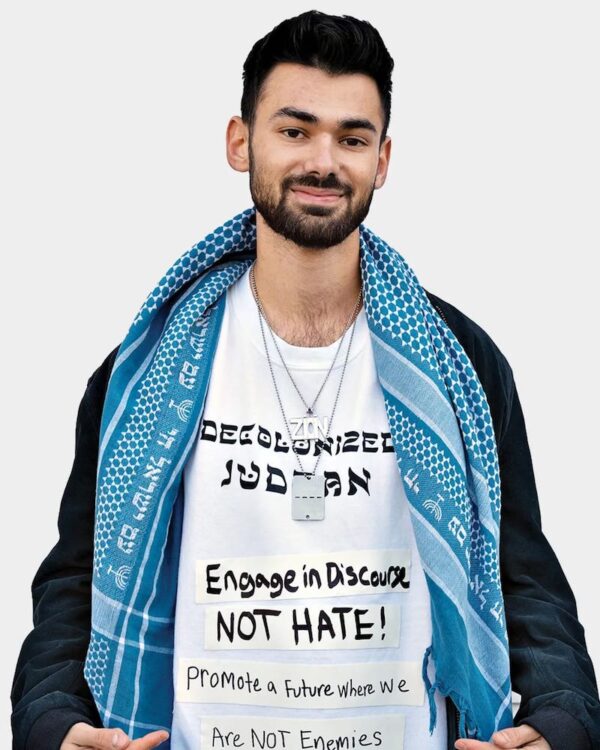
This image captures a young man whose attire and accessories defy conventional stereotypes and foster a dialogue of reconciliation. Adorned with a “Decolonized Judean” t-shirt, he ties himself to centuries of Jewish identity disentangled from colonial narratives. The tallit draped over his shoulders is traditionally worn during Jewish prayer, symbolizing a deep connection to religious heritage, contrasting with the keffiyeh’s prominence as a symbol of Palestinian nationalism. The necklace, a replica of an Israeli dog tag, echoes the sentiments of many Israelis advocating for the return of hostages with the message “Bring them home.”
Steeped in robust Jewish and pro-peace identification, the photo disrupts all the media binaries.

University of Texas police (UTPD) officers are pinning a protester on the concrete sidewalk and zip-tying them. Photo: Manoo Sirivelu – The Daily Texan, University of Texas at Austin via The Guardian
This photo came from a profile of protest images taken by college photographers featured in the Guardian.
The photographer, Manoo Sirivelu of UT-Austin’s The Daily Texan, writes:
In this picture, University of Texas police officers are pinning a protester on the concrete sidewalk and zip-tying them. Law enforcement would push in at intervals and surround the protesters, 360 degrees. I wanted to show the feelings of imprisonment and suffocation that the students were experiencing, so I tried to depict the officers’ legs as bars that were already surrounding the student.
While the reporting has heavily focused on law enforcement and militarized interventions, one emotion has been largely overlooked in the toll on the students. Despite the students’ remarkable composure and resolve in the face of suspension, expulsion, intimidation, and physical harm, there is a scarcity of photographs that capture the fear they have been burdened with.
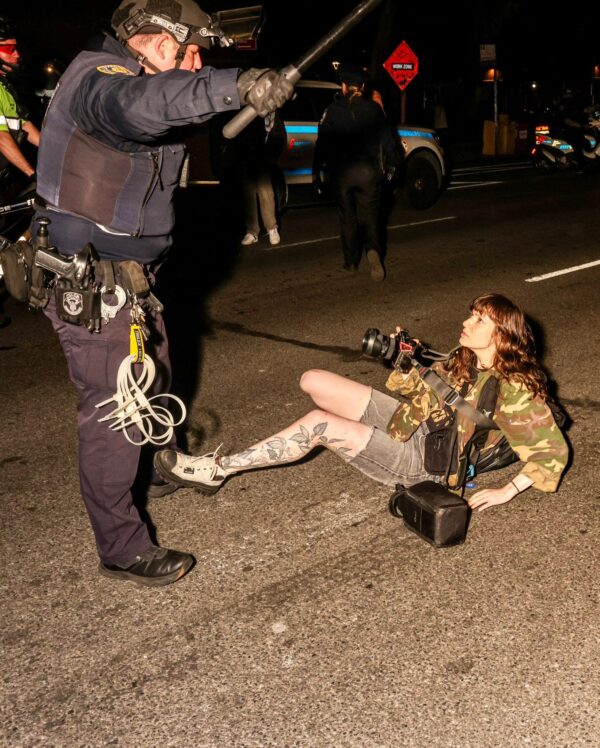
The NYPD knocked down and arrested credentialed journalist Olga Fedorova in New York, NY, on May 8, 2024. Photo: Alex Kent via Twitter
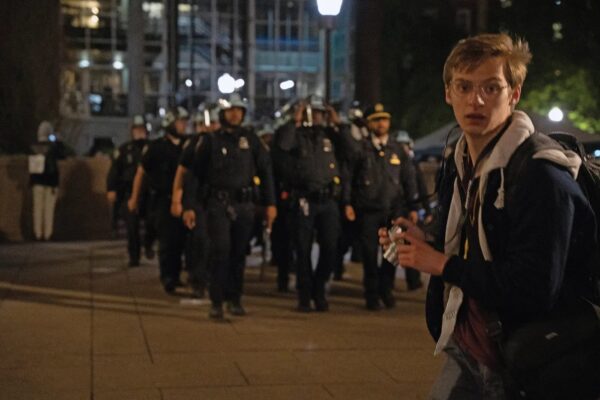
“The cops began to kettle us, threatening to arrest us. It was terrifying. Moments ago, Wyatt, who was taking video, and I were standing and then the next moment, they were moving toward us so quickly.” Photo by Gabriella Gregor-Splaver/Columbia Spectator
Given weeks of reports of student and professional photographers being harassed, this photo by Alex Kent showing an NYPD copy knocking down and arresting credentialed journalist Olga Fedorova at a “free Palestine” encampment at the Fashion Institute of Technology and Columbia Spectator’s Gabriella Gregor-Splaver’s image of an anxious staffer being kettled by police, personalizes and vividly frames the mockery of press rights.
Racism and Double Standards
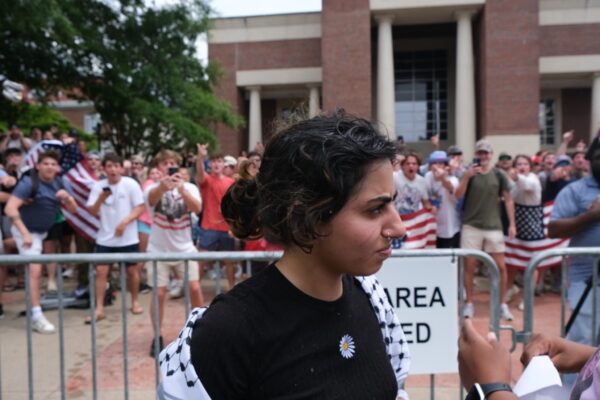
UMiss for Palestine protest met with opposition on campus. Photos by Maria Ramirez and Antonella Rescigno/The Daily Mississippian
The focus of the free Palestine protests has mainly been geopolitical. But this scene from the University of Mississippi and the accompanying images are driven by overt racism, hatred, and Islamophobia. The flaunting of Trump signs by enraged white male youth in what has been normalized as a “counter-protest” is unsurprising.
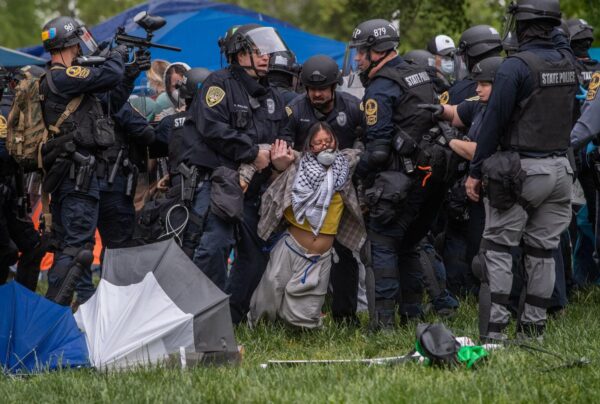
Police drag anti-war protesters out of an encampment at the University of Virginia on Saturday, May 4, 2024. Photo: Cal Cary/The Daily Progress
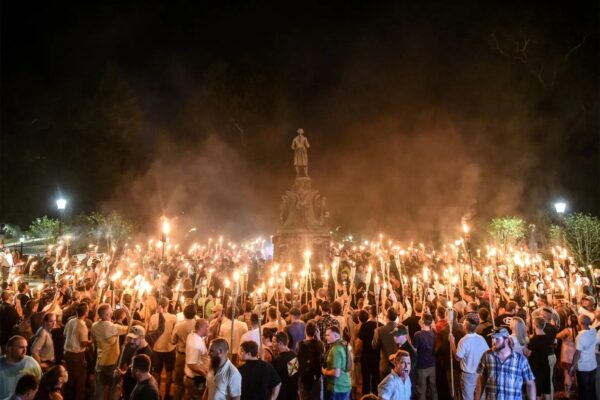
White nationalists participate in a torch-lit march on the grounds of the University of Virginia ahead of the Unite the Right Rally in Charlottesville, Va., Aug. 11, 2017. Photo: Reuters Pictures
For context, I have juxtaposed an image of riot cops violently raiding a peaceful “free Palestine” encampment at the University of Virginia last weekend with an image of the white nationalists who gained national attention walking unimpeded through the campus in 2017.
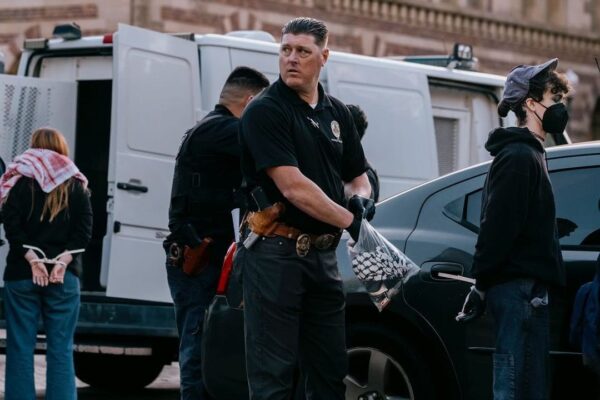

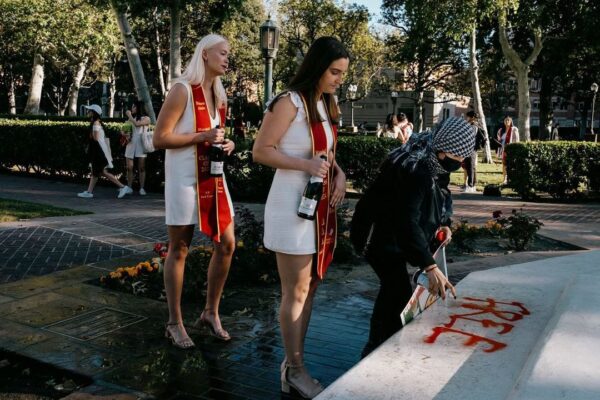
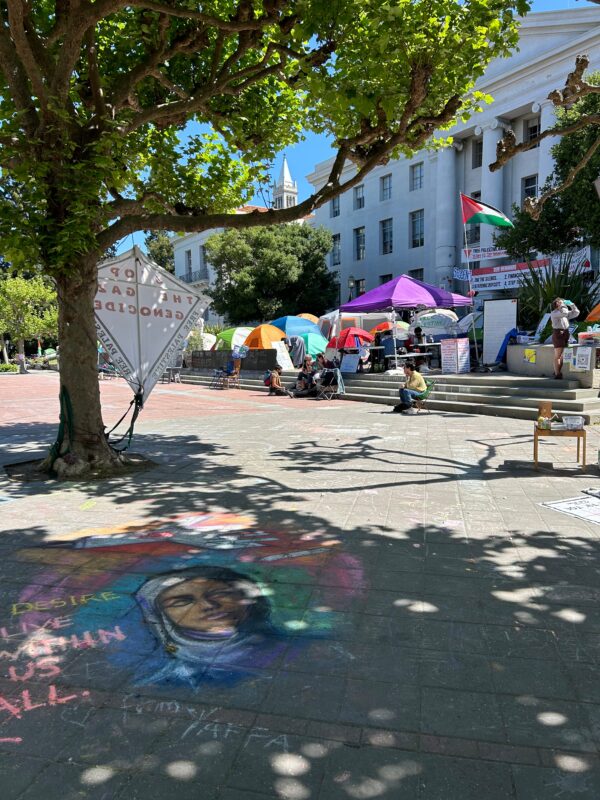
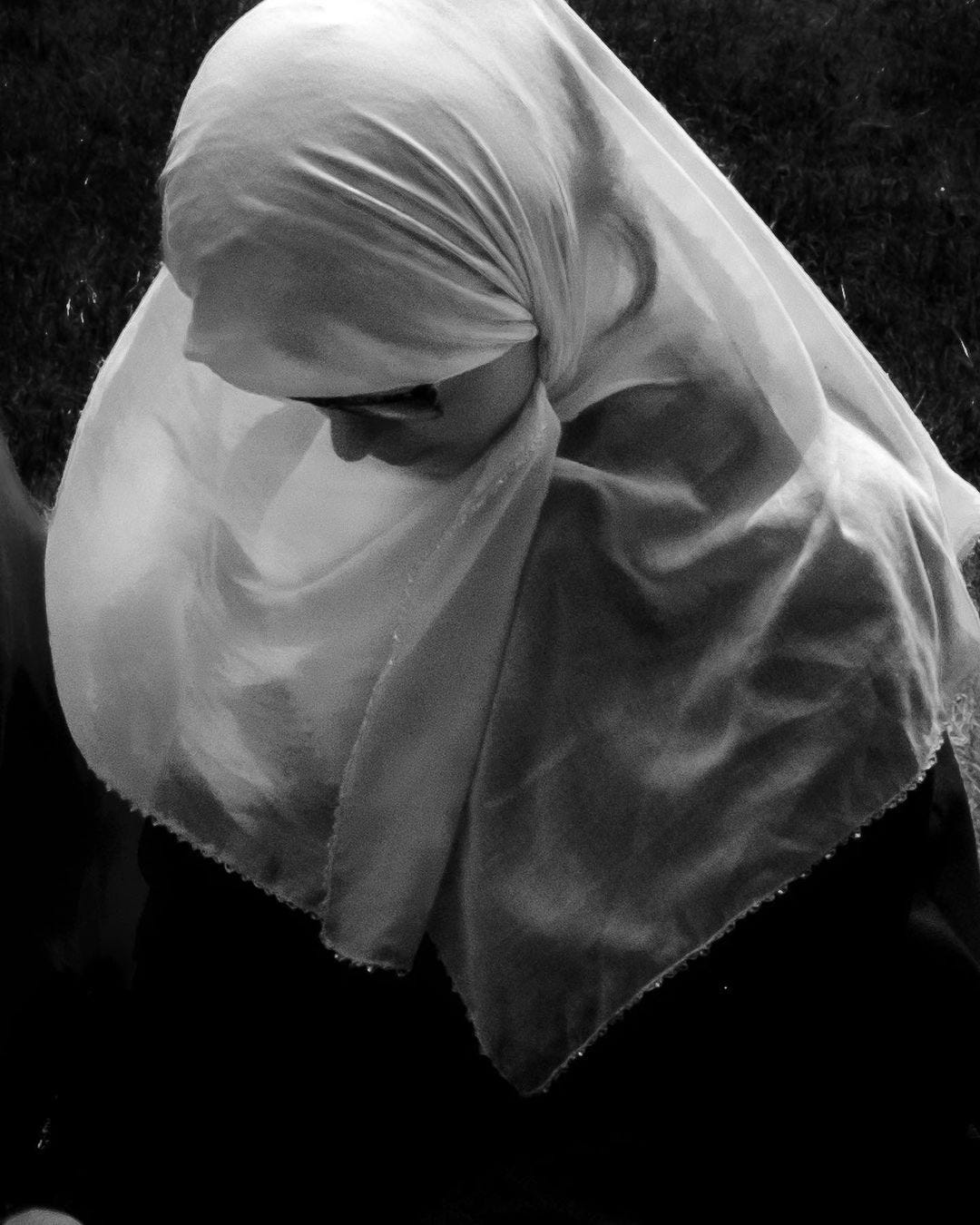
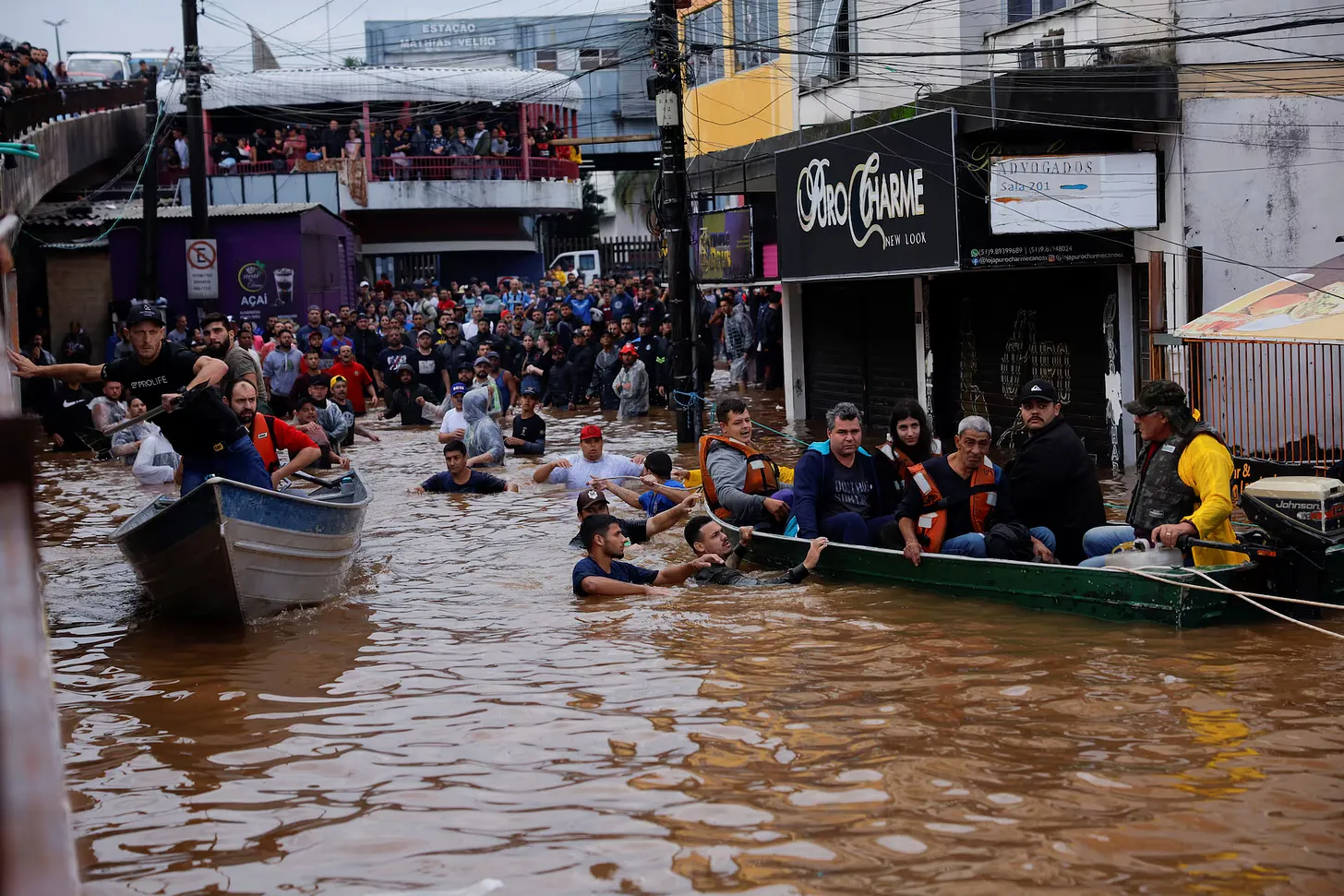
Reactions
Comments Powered by Disqus